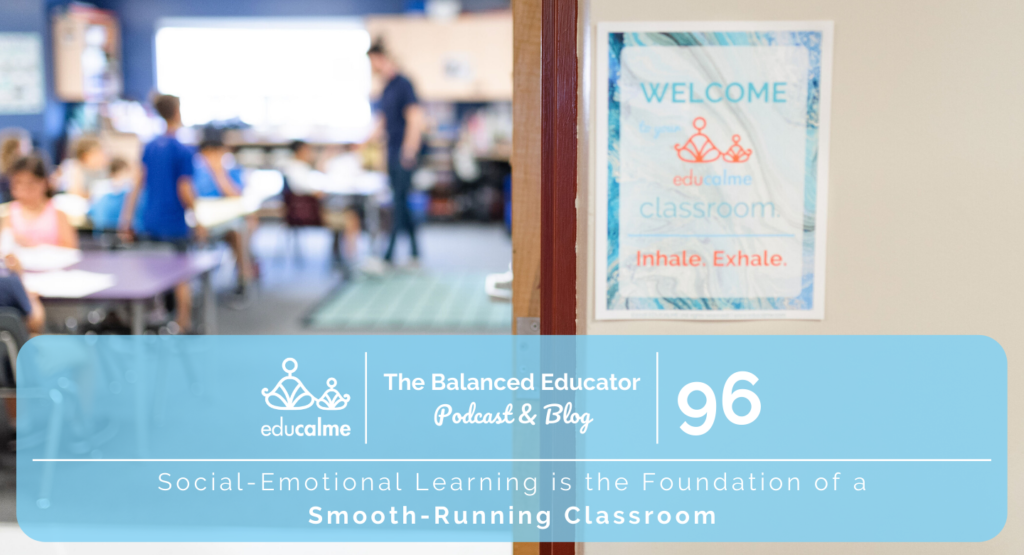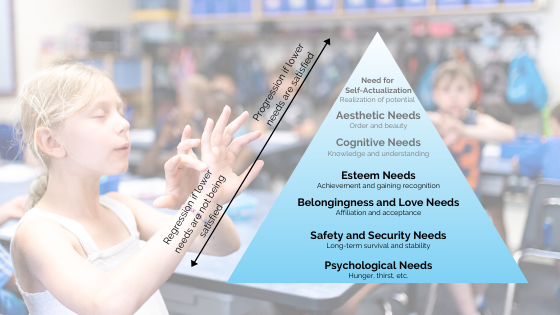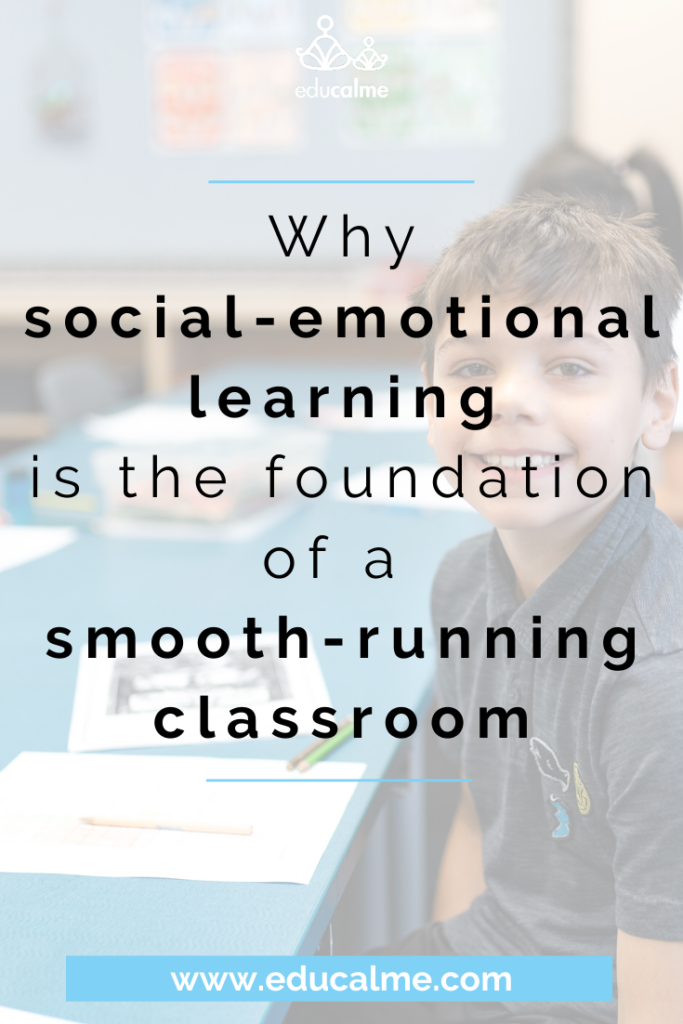Subscribe to the Balanced Educator Podcast so you don’t miss our upcoming episodes: iTunes | Spotify | Google Play
Check out the Educalme Free Trial now!

Abraham Maslow was a leader in the humanistic movement of psychology and he created an influential theory of motivation. He proposed that human motives are organized into a hierarchy of needs which is often depicted as a pyramid in which basic needs are at the bottom and must be met before a human is able to move onto the higher levels of needs and motivations.

Based on his theory, there are many levels of social-emotional needs that must be met before our students’ minds and bodies are ready to learn. In fact, there are four levels of needs that must be met before the cognitive needs for knowledge and understanding arise.
Before students are ready to learn, we must first do our best to meet their physiological needs (hunger, thirst, etc.), their needs for safety and security (long-term survival and stability), their needs for belongingness and love (affiliation and acceptance) and their esteem needs (achievement and gaining recognition).
Once those basic needs are met, then they are ready to satisfy their cognitive need for knowledge and understanding. But you might be wondering, once their physiological needs are met, how can we support the other levels of needs in the classroom before moving on to academics?
From our experience, doing a 5-minute daily mindfulness practice with your students followed by a community-building practice like a morning meeting or a sharing circle (more on that here) is the best way to support these levels of need for social-emotional learning and connection.
Read this blog post to learn exactly how to teach mindfulness in the classroom for social-emotional learning.
We’ve created a social-emotional learning resource that makes teaching mindfulness in your classroom as easy as pressing play! It’s called Educalme and it’s a ready-to-use, daily, bilingual (English and French), social-emotional learning program made by teachers, for teachers.
You can get the first theme of this full-year resource for free by registering for the free trial.
